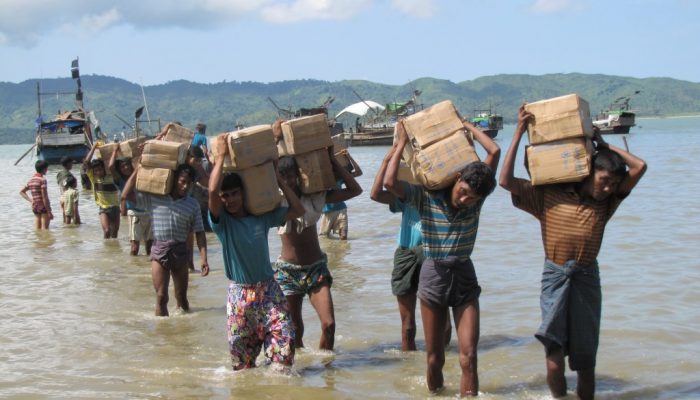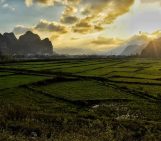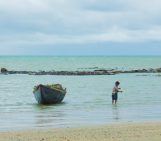
Each month, Jesse Zondervan picks his favourite posts from geoscience and development blogs/news which cover the geology for global development interest. Here’s a round-up of Jesse’s selections for the last month:
Imagine 140 million people across sub-Saharan Africa, south Asia and Latin America migrating in response to climate change effect, by 2050. This is what a recent World Bank report claims, by projecting current internal migration patterns due to effects, like coastal land loss and crop failure, into the future using climate models.
Climate migration will tend to be mostly internal to countries and can foster inequality as well as economic loss. Since it’s inevitable, we will need to plan for it.
We cannot prevent climate migration, but geoengineering will be a very powerful way to combat unnecessary increases in damage from climate change. With this power comes responsibility through. What will happen if one country decides to spray aerosols to decrease temperature, and inadvertently changes things for the worse for another region?
So yes, we need laws on geoengineering to prevent battles over well-meant geoengineering failures. Interestingly, I found a lot of research articles with new geoengineering proposals, so it’s really coming soon, and we need to think about regulation now.
Geoengineering can be costly. Pumping carbon dioxide from the atmosphere may prevent crop failures due to elevated temperatures, but it is still expensive. But what if we could use CO2 as a natural resource? A team of US and Canadian scientists say it will be possible to use captured CO2 for feedstock, biofuels, pharmaceuticals, or renewable fuels.
This month you will find an article under the section ‘career’, which you should have a look at if you’re doing or thinking of doing a PhD and you want to consider working outside academia. You will find a lot of articles under the usual headings too, so go ahead!
Geoengineering
Once we can capture CO2 emissions, here’s what we could do with it at ScienceDaily by Sarah Fecht at State of the Planet
Preventing hurricanes using air bubbles at ScienceDaily
Geoengineering polar glaciers to slow sea-level rise at ScienceDaily
Mekong River dams could disrupt lives, environment at ScienceDaily

It will be tempting for some countries to spray aerosols to change their climate. But they will change other people’s climate too. Credit: Edward Stojakovic (distributed via Flickr CC BY 2.0)
Climate Migration
Wave of Climate Migration Looms, but It “Doesn’t Have to Be a Crisis” by Andrea Thompson at Scientific American
Addressing Climate Migration Within Borders Helps Countries Plan, Mitigate Effects by Alex de Sherbinin at State of the Planet
Career
Having an impact as a development economist outside of a research university: Interview with Alix Zwane by David McKenzie at Development Impact
Sustainability
Structuring collaboration between municipalities and academics: testing a model for transdisciplinary sustainability projects at Lund University
To Sustain Peace, UN Should Embrace Complexity and Be UN-Heroic by Peter Coleman at State of the Planet
Climate Change Adaptation
The Rise of Cities in the Battle Against Climate Change by Allison Bridges at State of the Planet
A City’s Challenge of Dealing with Sea Level Rise at AGU’s Eos
The absence of ants: Entomologist confirms first Saharan farming 10,000 years ago at ScienceDaily
Turning cities into sponges: how Chinese ancient wisdom is taking on climate change by Brigid Delaney at The Guardian
Risk of sea-level rise: high stakes for East Asia & Pacific region countries by Susmita Dasgupta at East Asia & Pacific on the Rise
National Flood Insurance Is Underwater Because of Outdated Science by Jen Schwartz at Scientific American
Disaster Risk
Mobile phones and AI vie to update early disaster warning systems by Nick Fildes at The Financial Times
7 years after tsunami, Japanese live uneasily with seawalls by Megumi Lim at Japan Today
Volcanic risk
GeoTalk: How will large Icelandic eruptions affect us and our environment? By Olivia Trani at EGU’s GeoLog
Earthquake risk
The Wicked Problem of Earthquake Hazard in Developing Countries at AGU’s Eos
External Opportunities
Summer 2018 Internship Opportunities at the Earth Institute
Check back next month for more picks!
 Follow Jesse Zondervan @JesseZondervan. Follow us @Geo_Dev& Facebook.
Follow Jesse Zondervan @JesseZondervan. Follow us @Geo_Dev& Facebook.




